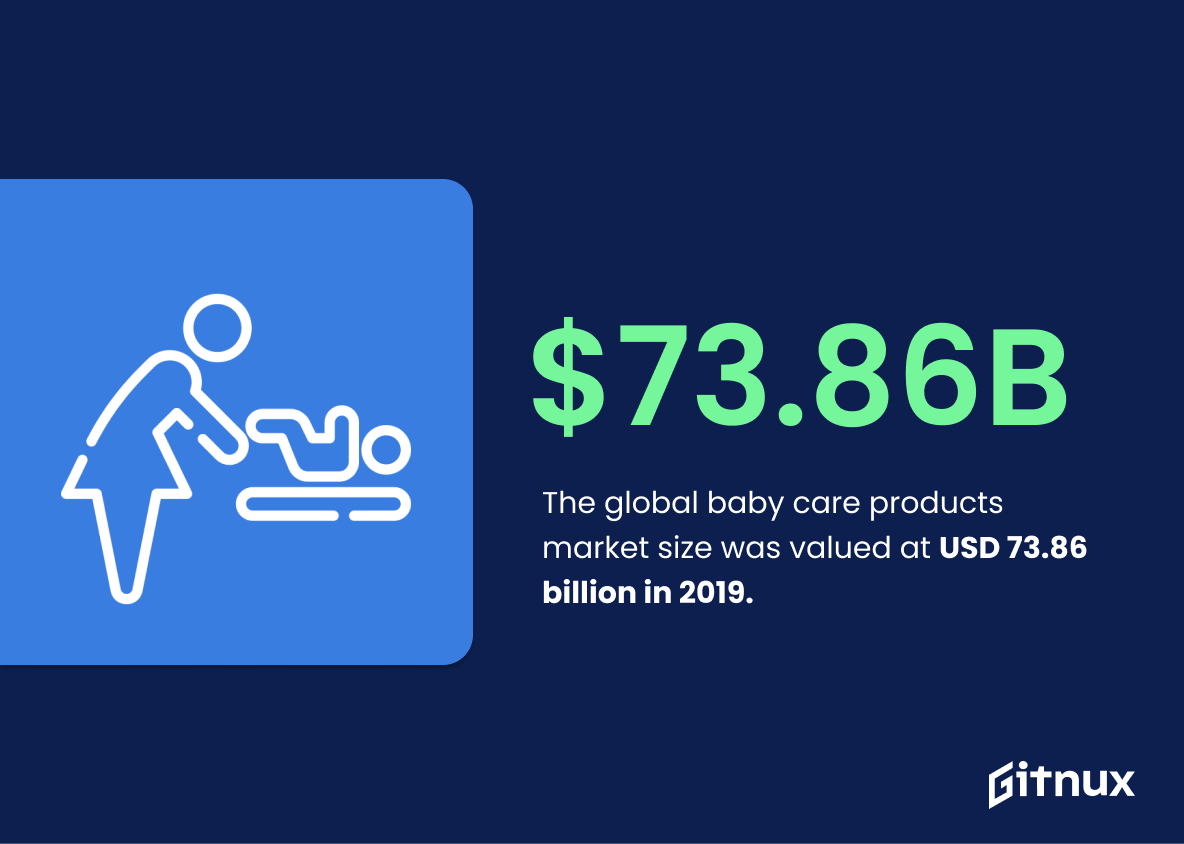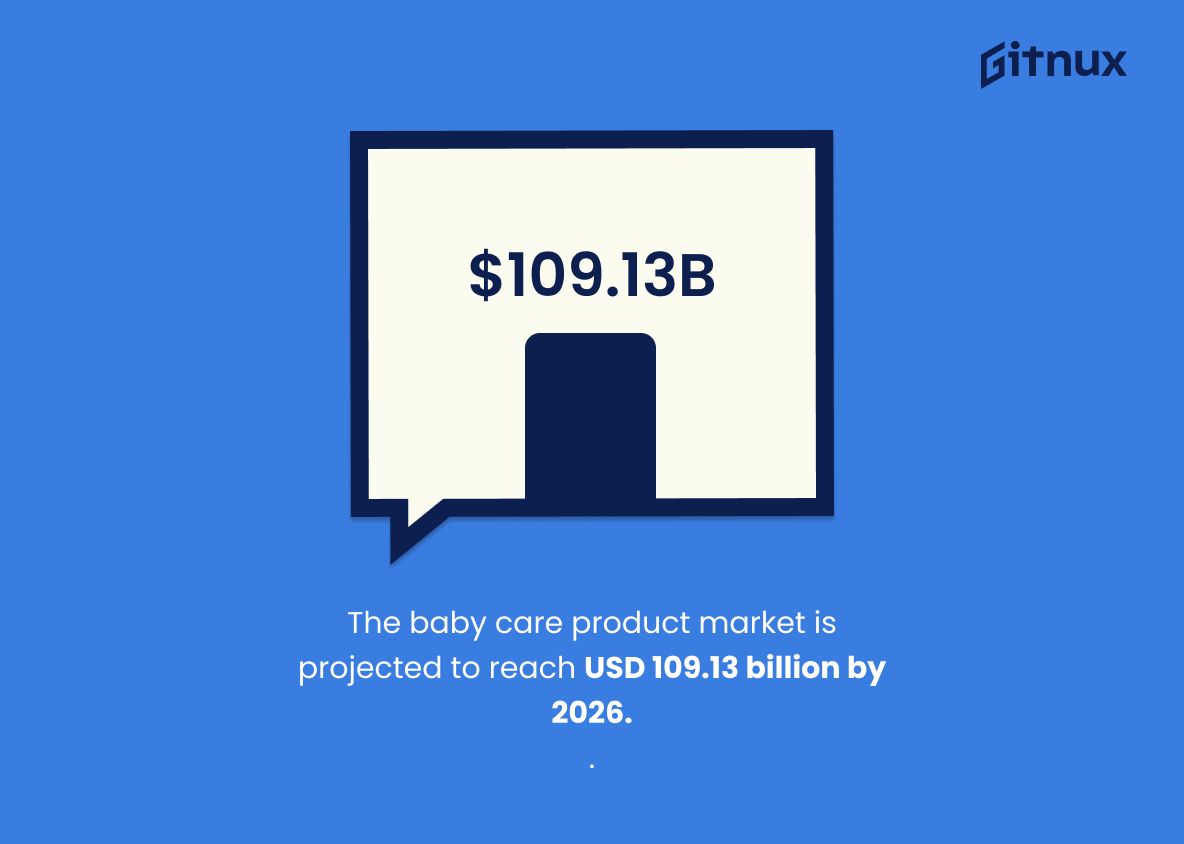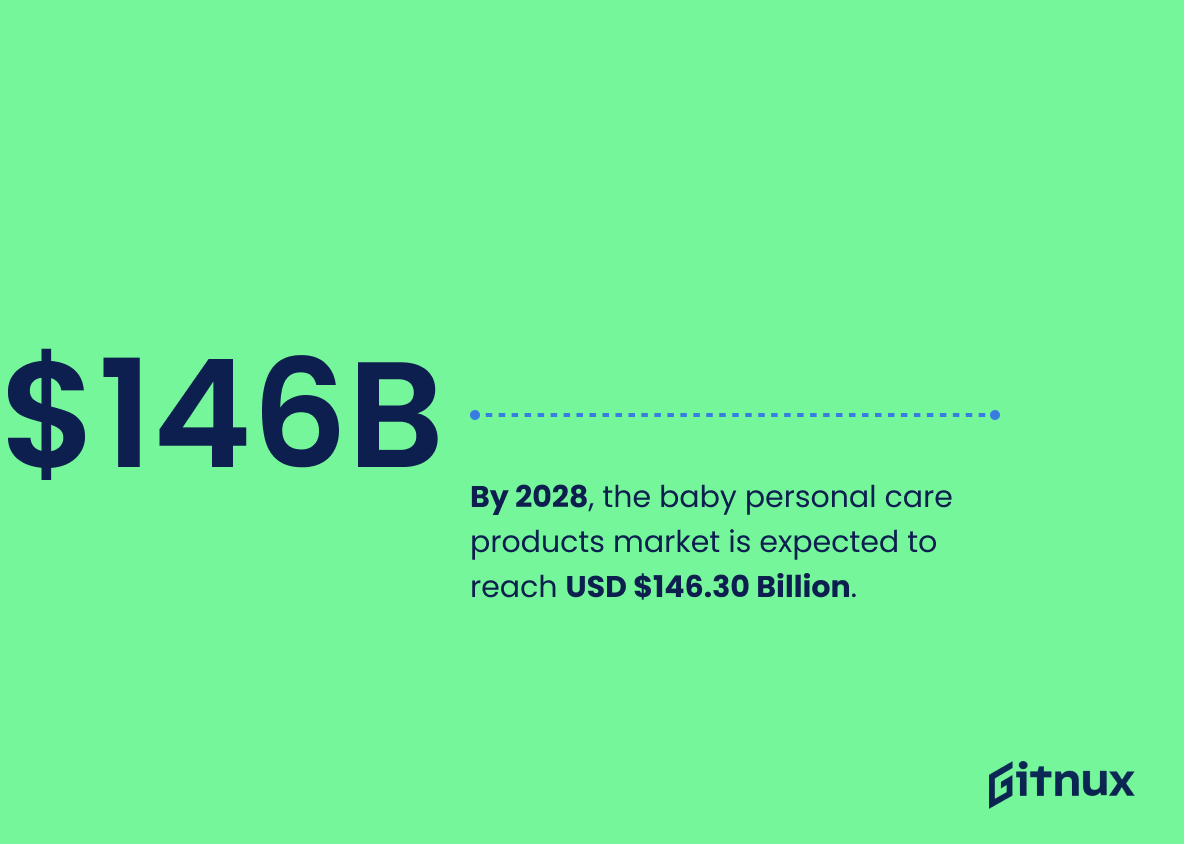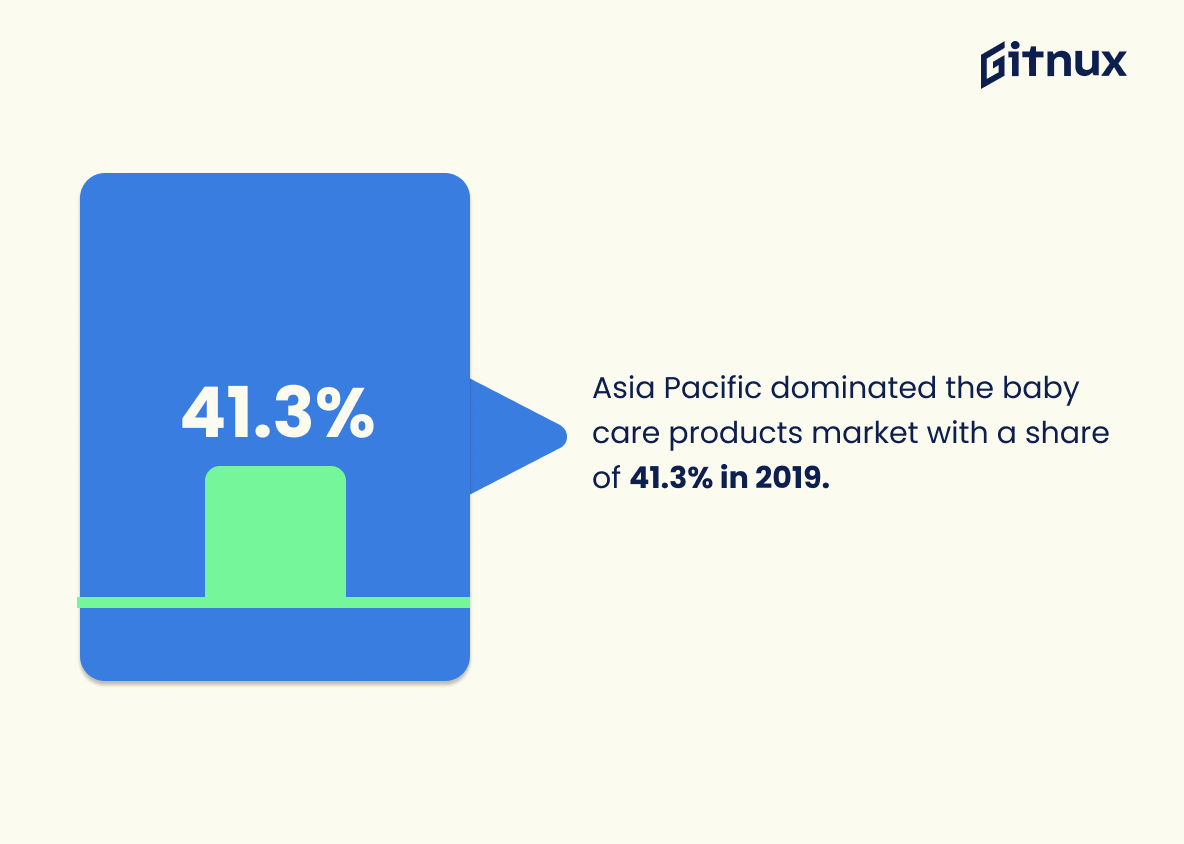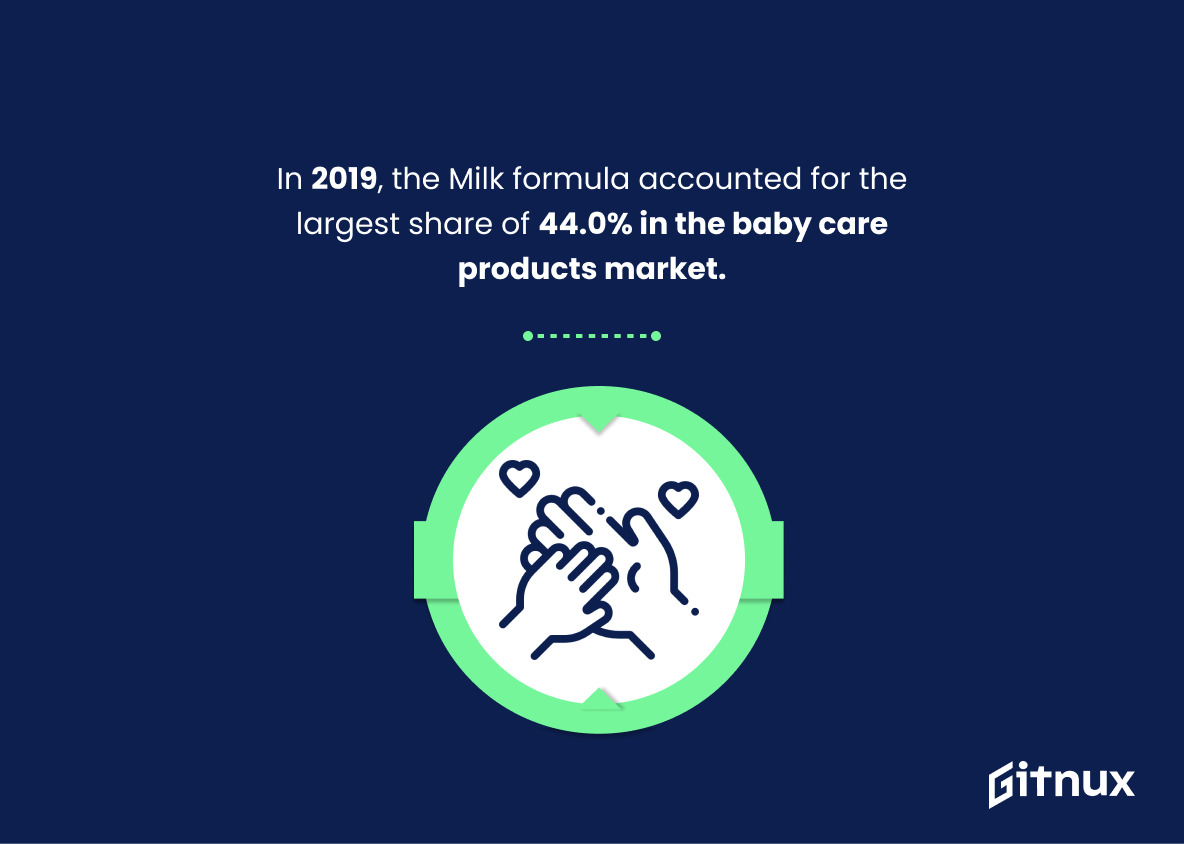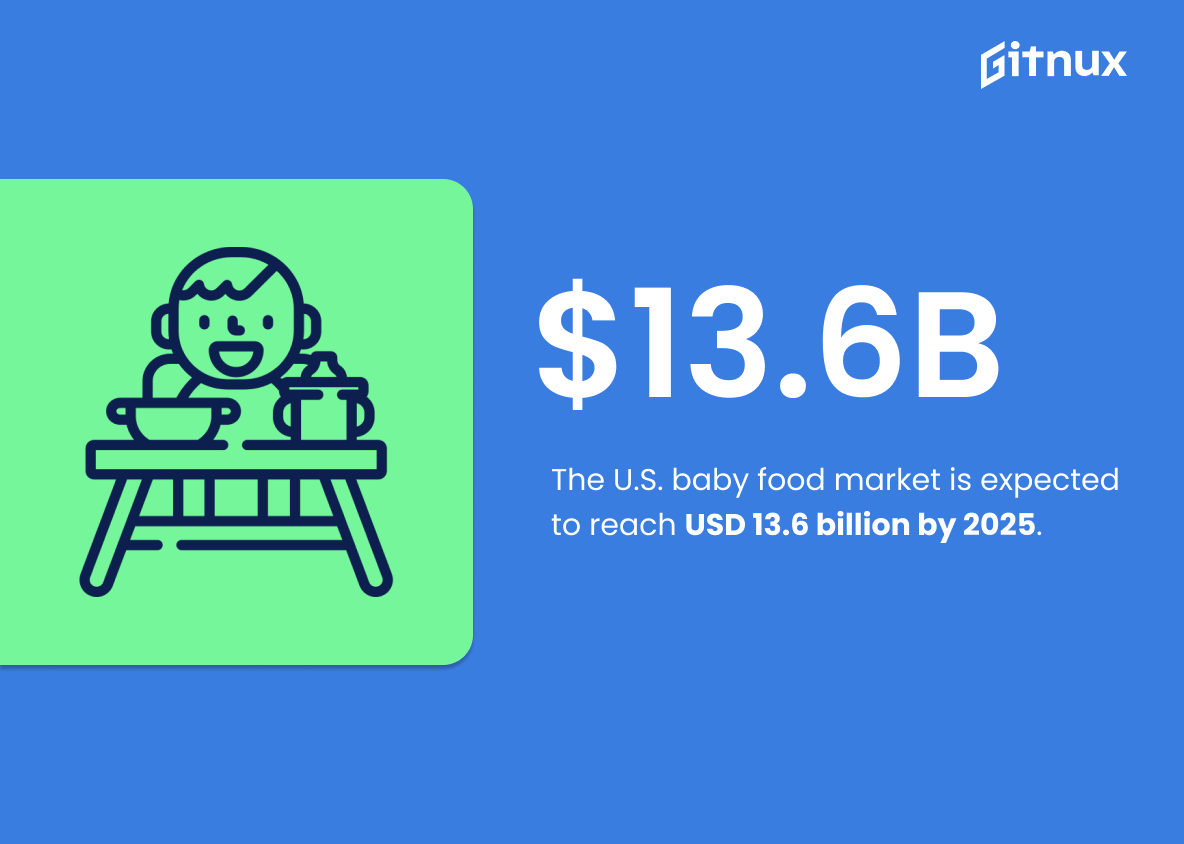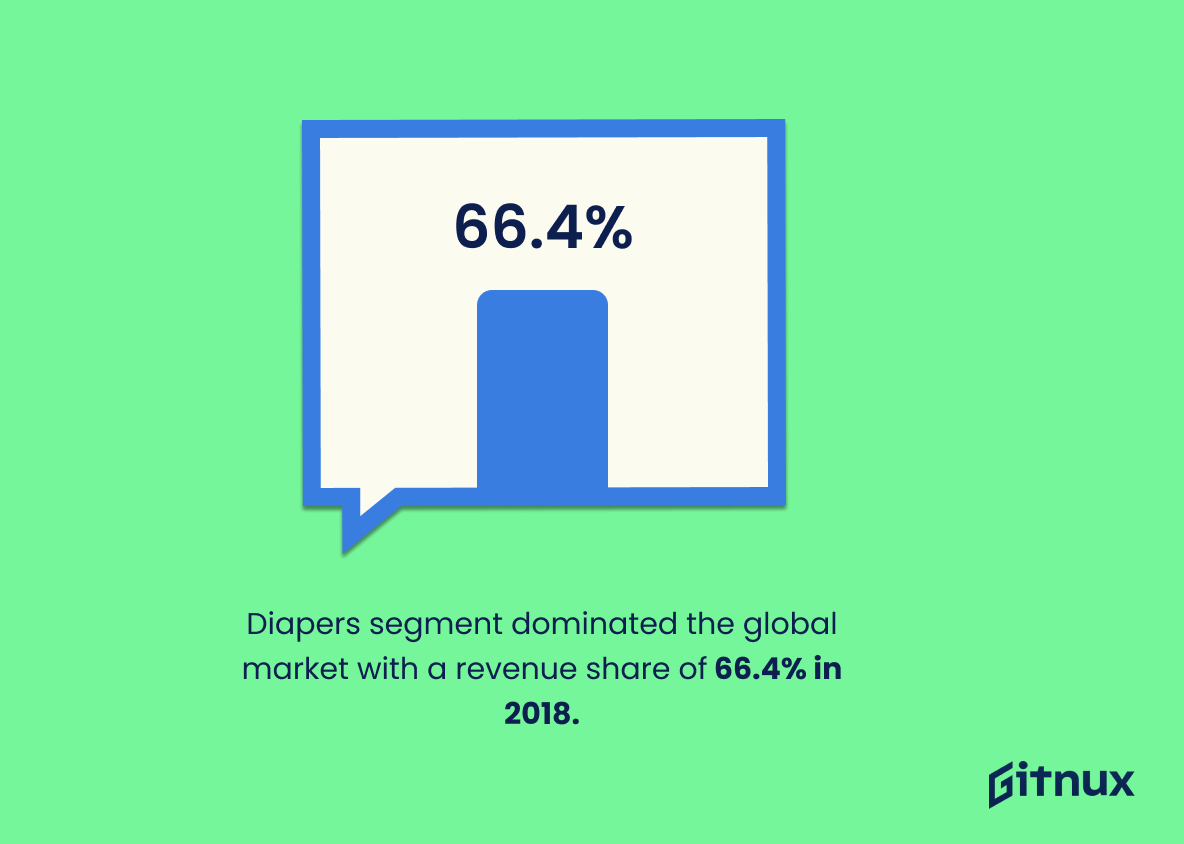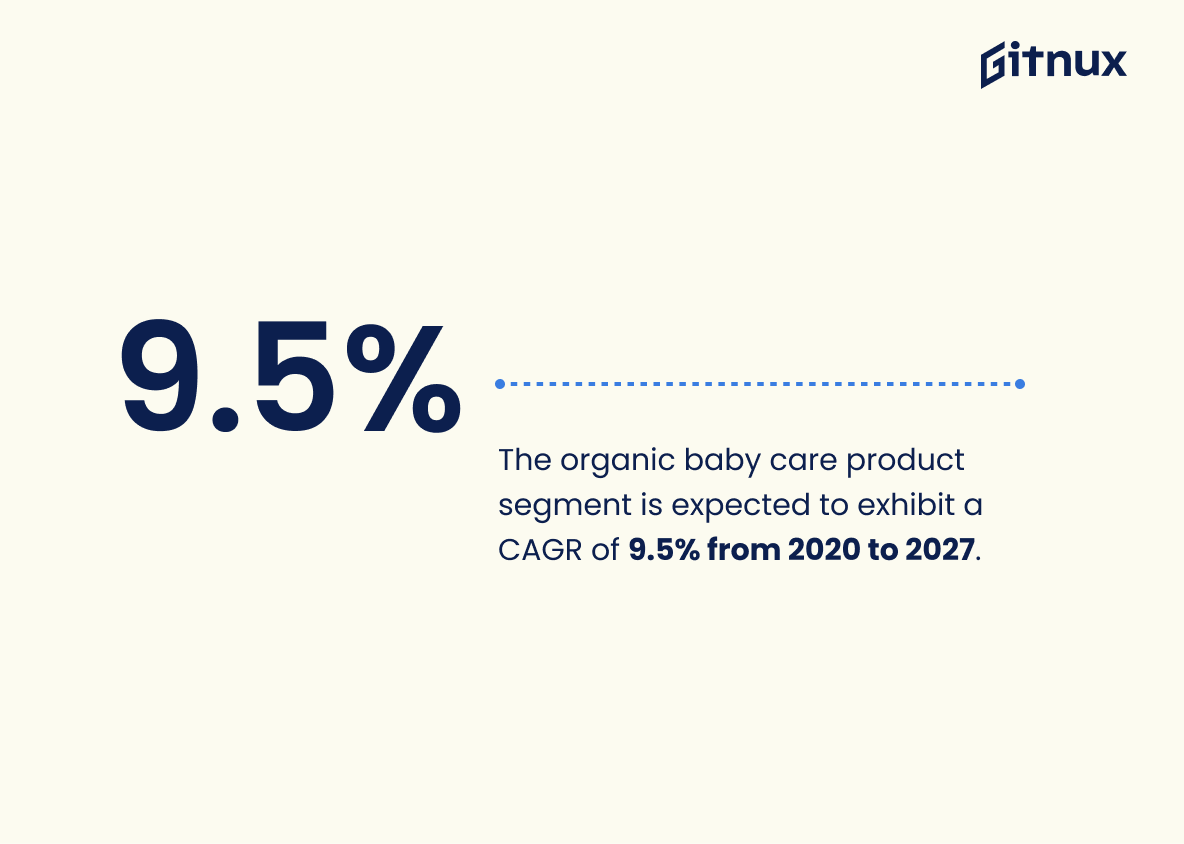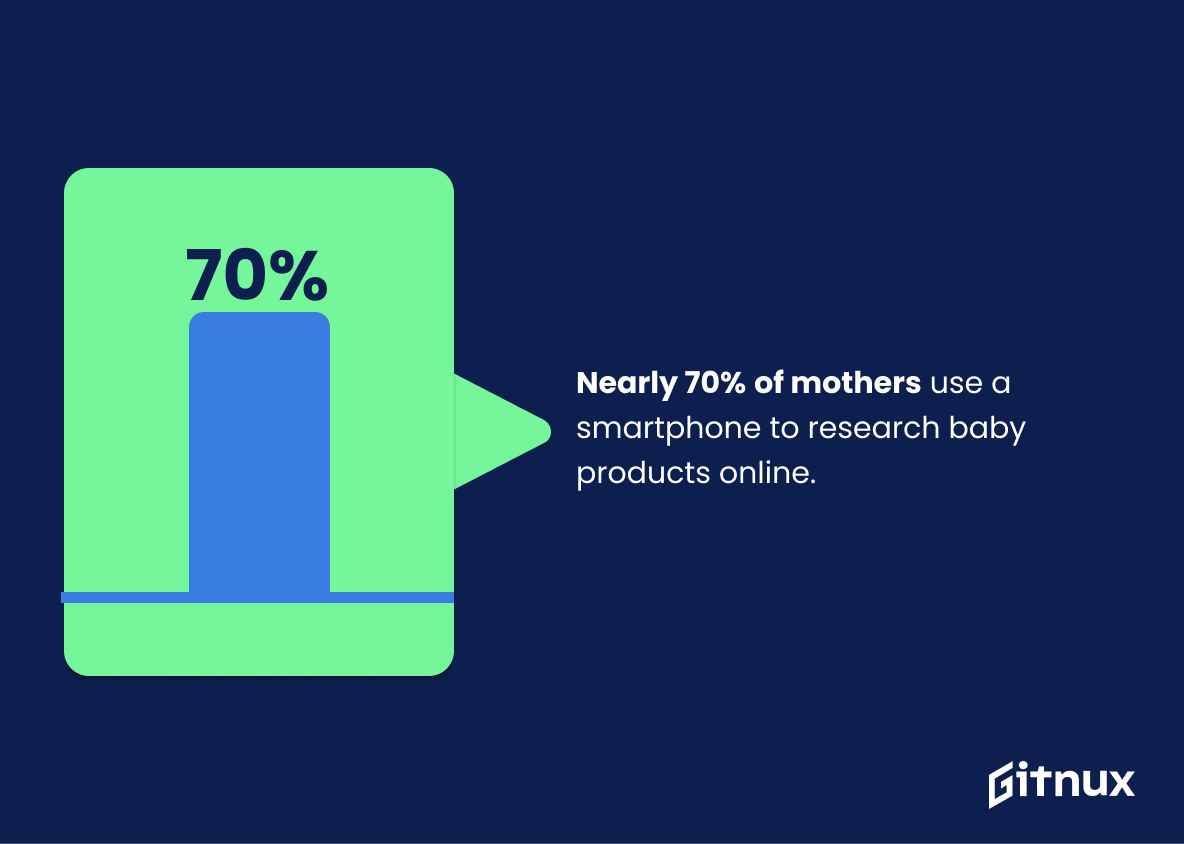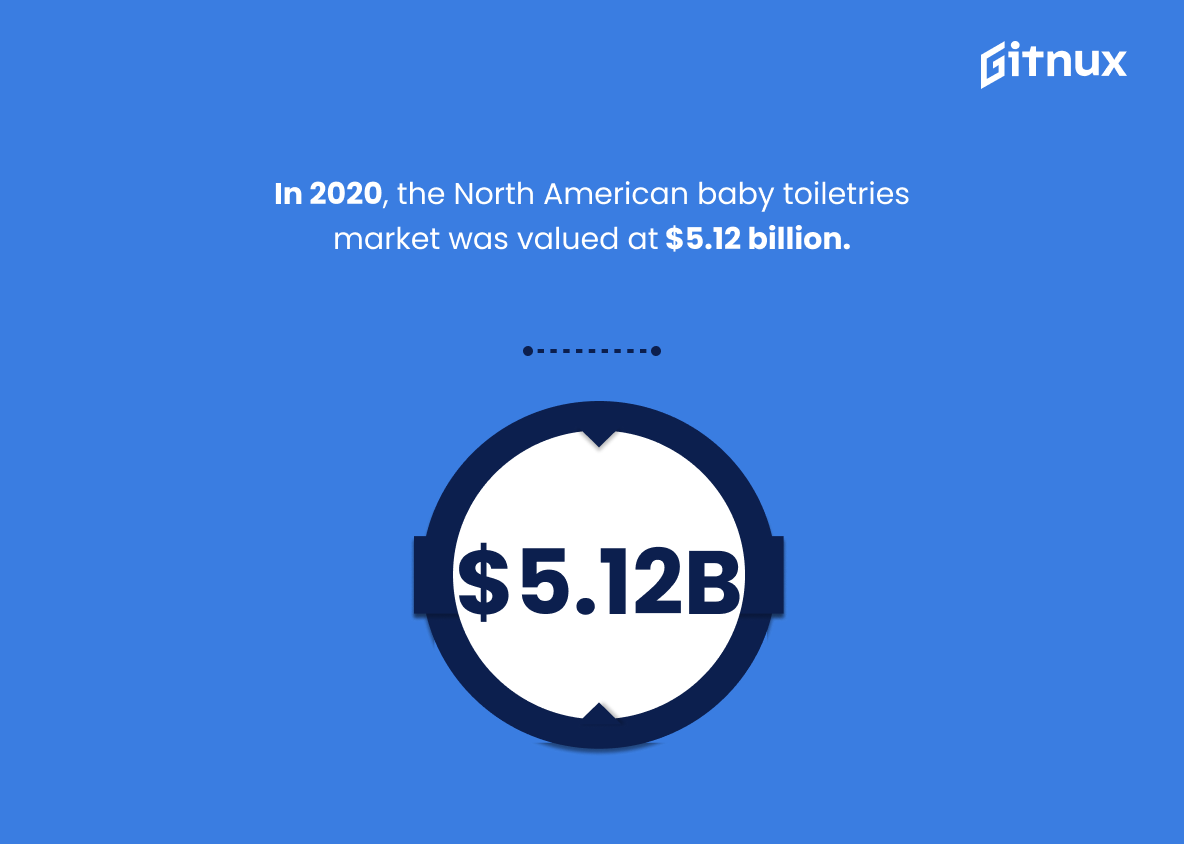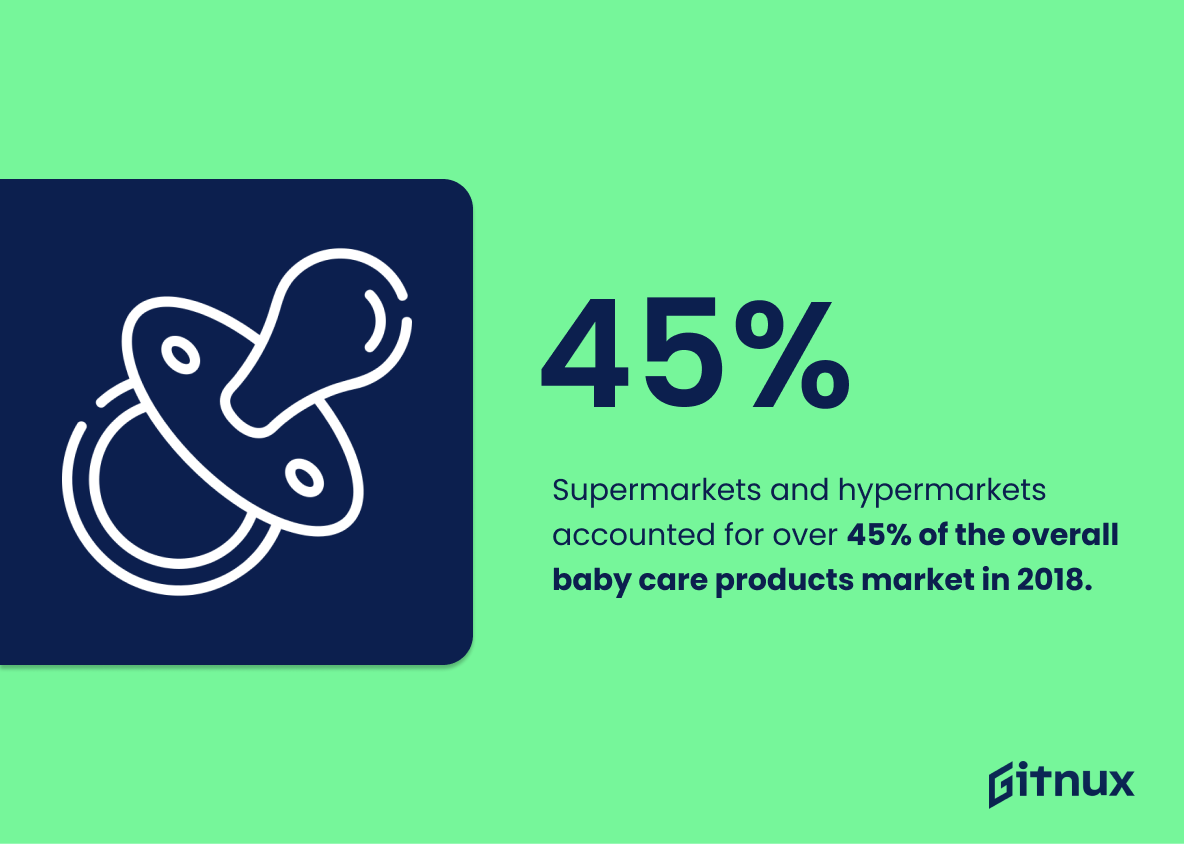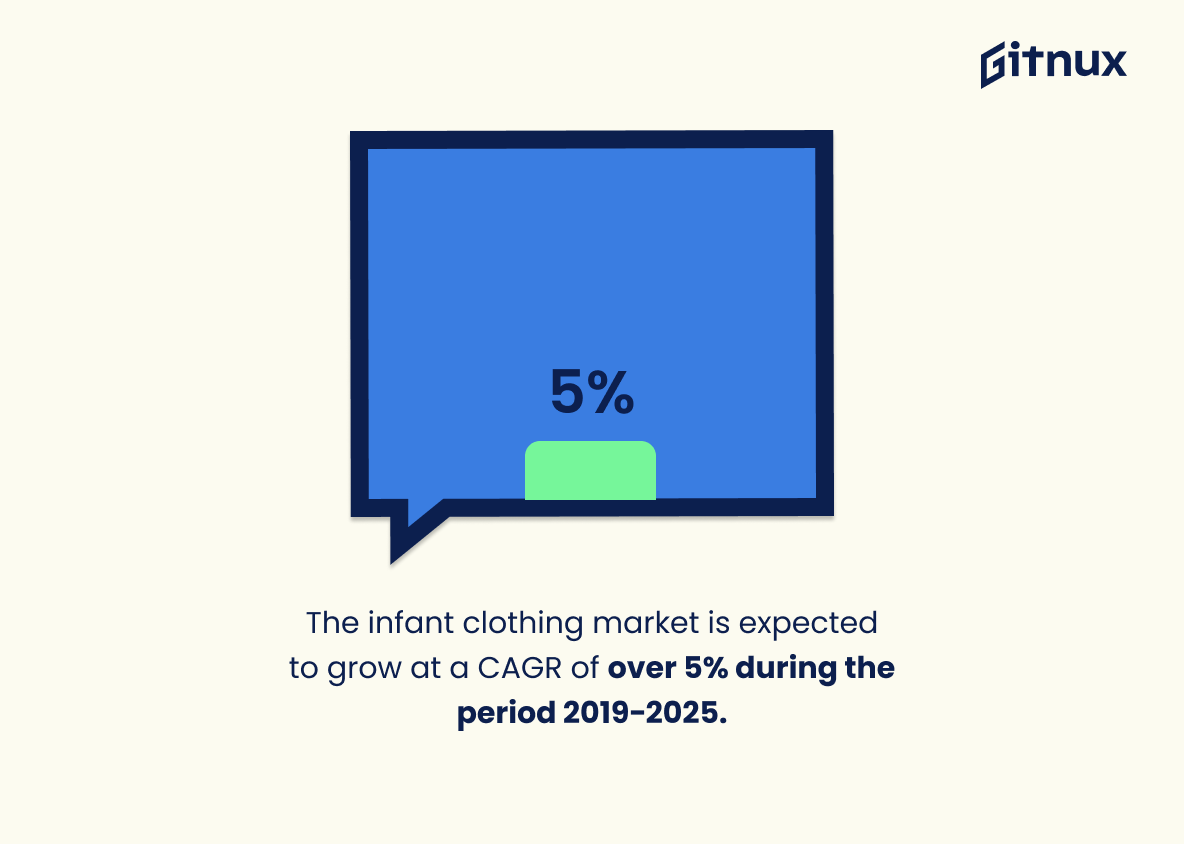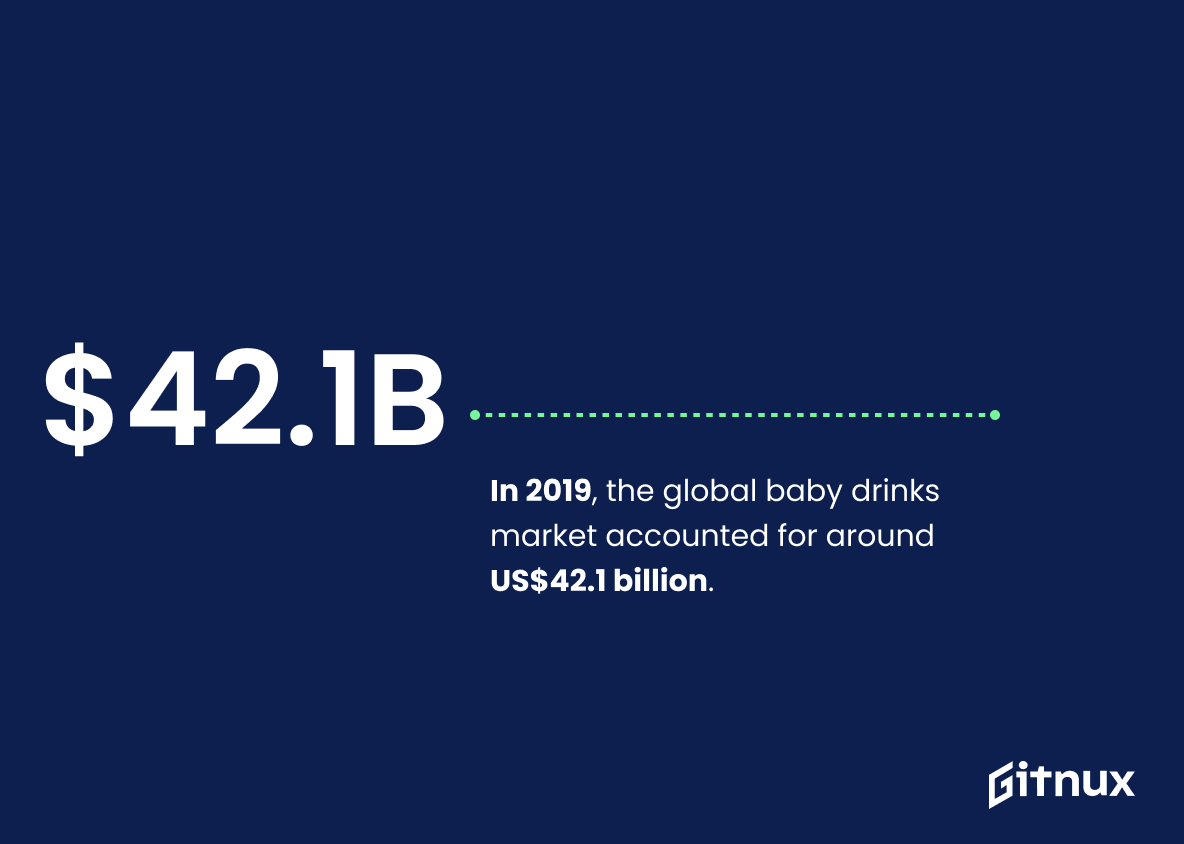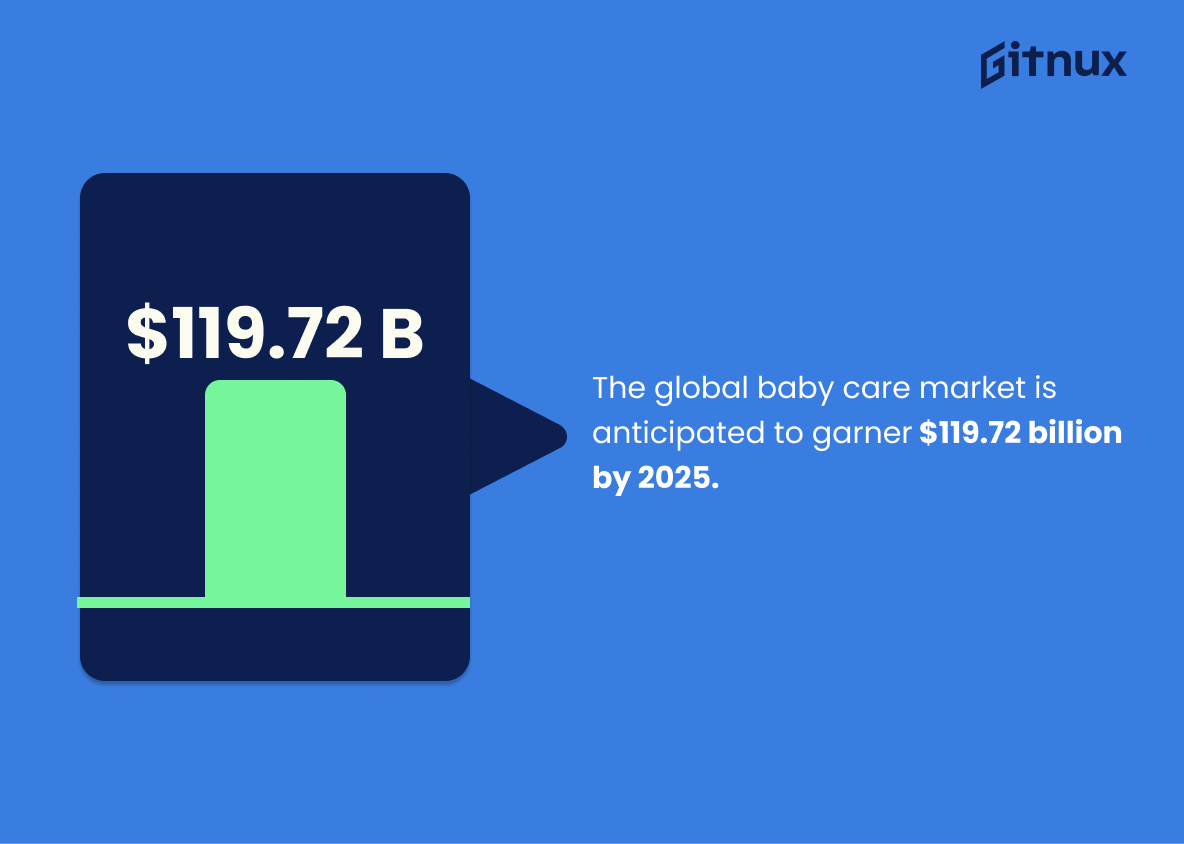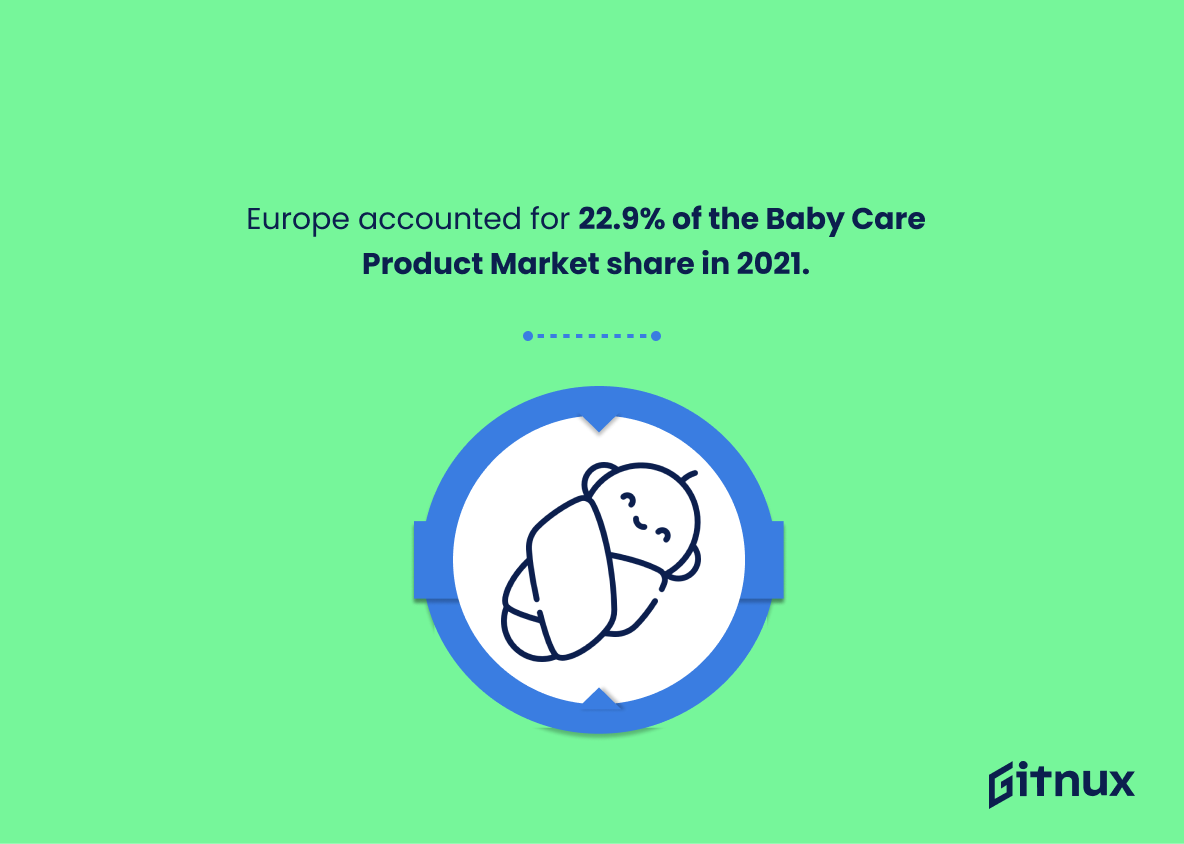Navigating through the complex and ever-expanding world of the Baby Products Industry can seem daunting. As it continues to flourish, it becomes increasingly important to keep an eye on the shifting trends and figures within this dynamic market. Whether you are a manufacturer, retailer, investor, or simply an interested observer, understanding key Baby Products Industry Statistics is invaluable.
In this blog post, we will explore an array of enlightening statistics about this booming industry, providing you with valuable insight and helping you stay informed about crucial developments in the realm of baby products.
The Latest Baby Products Industry Statistics Unveiled
The global baby care products market size was valued at USD 73.86 billion in 2019.
Harnessing the revelation that the baby care products market reached a substantial volume of USD 73.86 billion in 2019, one can draw critical assumptions about the industry’s state. This prodigious figure reinforces the intensity of the consumer demand and the resultant manufacturing response. It provides keen insights into the lucrative nature of the baby care products sector, thus painting a dynamic backdrop for the blog post.
It provides a foundational figure that allows readers to gauge market trends, discern industry growth, and apprehend the compelling potential for business ventures and investment opportunities within the realm of baby care products. The statistic broadens the readers’ comprehension of the industry, gearing them towards a deeper understanding of the baby products market landscape.
The baby care product market is projected to reach USD 109.13 billion by 2026.
Peering into the crystal ball of Baby Products Industry Statistics, one revelation is particularly striking. The baby care product market, our figurative ship, is projected to voyage to a treasure chest worth USD 109.13 billion by 2026. Now, that’s not just a random figure tossed overboard. It signifies the golden age of growth and opportunity awaiting savvy investors, manufacturers and retailers.
Its implications drill down to various levels – grabbing the attention of manufacturers to focus on innovative solutions, urging marketers and retailers to identify emerging trends and needs, and signalling investors to consider entry in promising sectors. More importantly, it makes trendspotters and industry analysts lick their lips as they decipher patterns, trends and predict changes this imminent surge will bring about. Ultimately, harnessing this growth can lead to economic prosperity and enhanced customer satisfaction in the baby care product industry.
By 2028, the baby personal care products market is expected to reach USD$146.30 Billion.
Forecasting the significant rise to a whopping USD$146.30 Billion by 2028, this statistic illustrates a vibrant comet streaking across the galaxy of the baby personal care products market. Its predictive prowess not only paints a picture of mammoth growth, but also infuses hope, prospect, and lucrative viability into the hearts of manufacturers, retailers, and stakeholders alike.
This radiant figure encapsulates the exponential demand and vast potential this industry holds, pushing it into the limelight as a lucrative field worth pursuing. More than just a statistic, it serves as a guiding lighthouse, illuminating the path to unprecedented growth and success in the complex landscape of baby products industry.
Asia Pacific dominated the baby care products market with a share of 41.3% in 2019.
In the grand tapestry of the Baby Products Industry Statistics, the thread that truly catches the eye is Asia Pacific’s commanding influence. Grasping a hefty 41.3% market share in 2019, this region is not just dominating, but reshaping the baby care products landscape.
It’s a profound testament to the region’s booming economies, rapidly growing population and the increasing purchasing power pushing the industry’s boundaries. This stronghold position paints a compelling picture of consumer behavior, underlining Asia Pacific as a region to watch, study, and ultimately, understand for anyone playing in or entering this market.
In 2019, the Milk formula accounted for the largest share of 44.0% in the baby care products market.
Diving deep into the world of baby products industry, an intriguing insight unfolds universally in 2019 the milk formula single-handedly dominated the baby care products landscape by capturing a whopping 44.0% market share. Such an impressive figure illustrates the dominating role and the undeniable relevance of milk formula in the industry, bolstered by the universal need for nutritious infant feeding options.
This revelation also mirrors the purchasing habits and preferences of parents or caregivers, who are evidently prioritizing nutritional necessities over other baby care products. Succinctly, this market truth sheds light on future market forecasting and strategic planning within the baby care industry, as well as informing potential investors and stakeholders about the areas they might focus on for maximum return.
The U.S. baby food market is expected to reach USD 13.6 billion by 2025.
Nestling this projection of the U.S. baby food sector potentially ballooning to a staggering USD 13.6 billion by 2025 within the realm of Baby Products industry statistics, we unravel a compelling narrative around the sector’s growth trajectory. This projection orchestrates a vibrant show of the market’s dynamism, forecasting not just robust health, but also a galloping momentum likely to stretch beyond the current decade.
This statistical highlight carves out a salient role for baby food within the Baby Products industry, accentuating its capacity to be a powerhouse of economic growth. Moreover, it hints at the segment’s potential to unlock new opportunities for manufacturers, retailers, and stakeholders alike, shaping a burgeoning industry for businesses to tap into. Thus, this statistic anchors a powerful discourse around market trends, user demand, and a lucrative investment landscape that is evolving within the Baby Products Industry.
Diapers segment dominated the global market with a revenue share of 66.4% in 2018.
Understanding the dominating force that the diaper segment held over the global market in 2018, with a revenue share of 66.4%, casts a spotlight on the significant role it plays in the baby products industry. It’s akin to an overwhelming rook in the strategical game of chess. The figure showcases a mighty stronghold that the diaper market has, indicating a high demand trend among consumers which can’t be overlooked by manufacturers or retailers.
Additionally, it offers a take-off point for discussions exploring market dynamics, profit potential, or sustainability matters within the baby products industry. All these elements, driven by this statistic, are instrumental in sculpting effective marketing strategies, investment prospects, and new product development.
The organic baby care product segment is expected to exhibit a CAGR of 9.5% from 2020 to 2027.
Showcasing the potential for growth, the projected Compound Annual Growth Rate (CAGR) of 9.5% in the organic baby care product segment from 2020 to 2027 imparts a powerful message. It shines a light on the burgeoning appetite for organic products amid discerning parents who prioritize their babies’ health and well-being.
This forecast paints a promising landscape for businesses operating within this niche, offering a fertile ground that might yield rich dividends for those who effectively tap into this trend. Moreover, it serves as a compelling economic indicator, reflecting a crucial shift towards a more health-conscious society and the evolving demands of the baby product industry.
Nearly 70 percent of mothers use a smartphone to research baby products online.
Delving into the heart of the Baby Products Industry, it’s invigorating to encounter statistics like “Nearly 70 percent of mothers use a smartphone to research baby products online.” Such numbers are a testament to the colossal shift in consumers’ purchasing behavior, driven by the ubiquitous embrace of technology to make informed buying decisions.
This statistic delivers a potent message to industry players: the digital playground is a crucial battlefield. The modern-day mother, smartphone in hand, is keener than ever to scrutinize each product she brings into her child’s life. She’s evaluating, comparing, and making decisions at her fingertips, underscoring the importance of cultivating a compelling online presence for any brand wanting to secure a piece of this flourishing market.
Moreover, there’s an implicit call to action here for businesses. With mothers increasingly relying on their smartphones for product research, an investment in user-friendly mobile interfaces, engaging content, and targeted online marketing will no longer be optional; it will be the wind in the sails of growth in this industry. Clearly, the modern mom, with her commitment to product quality, is more than just a statistic; she’s the driving force behind this digital revolution in the Baby Products Industry.
In 2020, the North American baby toiletries market was valued at $5.12 billion.
Peeling back the layers of the baby products industry exposes highly fascinating facts, such as the North American baby toiletries market’s valuation soaring to an impressive $5.12 billion in the year 2020 alone. This substantial figure is a testament to the industry’s fierce vitality and buoyancy, reflecting potent consumer demand in this specific segment.
Furthermore, it offers the reader a quantitative understanding of the market’s magnitude, emphasizing the potential for exponential business growth. Additionally, it illustrates consumer trends, spending habits, and competitive landscape, essential elements that would catch the interest of any stakeholder or investor delving into the world of baby products.
Supermarkets and hypermarkets accounted for over 45% of the overall baby care products market in 2018.
Highlighting that supermarkets and hypermarkets were responsible for nearly half of the baby care products market in 2018 underscores the immense role these entities play in this industry. It’s a clear testament to the significance of these traditional retail channels in the marketing and distribution of baby products. Ultimately, this statistic gives a greater understanding of consumer behavior – it tells us a great deal about where parents and guardians prefer to shop for these products.
In the grand scheme of things, understanding this shopping trend can provide crucial insights for both new entrants and existing players in the baby products industry as they strategize on distribution channels. Considering this data, both manufacturers and retailers could see this as an opportunity to focus on partnerships, promotions, and product placement within these high traffic, high sales environments.
The infant clothing market is expected to grow at a CAGR of over 5% during the period 2019−2025.
Examining the projected compound annual growth rate (CAGR) of over 5% for the infant clothing market from 2019 to 2025 presents a beacon of hope for key stakeholders in the Baby Product Industry. This crucial statistic reflects a mounting trend, signifying vibrant and robust growth in this sector. The ongoing and future entrepreneurs, investors, or businesses looking to diversify their revenue streams can take a promising cue from this.
The figure also opens a window of opportunities for marketers, who can leverage this escalating demand trend by creating impactful marketing strategies. Hence, it illustrates a powerful, expanding horizon in the Baby Products Industry as a whole and provides a guiding compass for decision-making and strategic planning.
In 2019, the global baby drinks market accounted for around US$42.1 billion.
Illustrating the magnitude of the baby drinks market seated at a staggering US$42.1 billion in 2019 gives us an enriched view into the vibrant world of the baby products industry. This figure handily captures the immense financial weight and market demand driving this sector. This data point doesn’t merely represent a number, rather it reflects the scope of parenting investments in child nutrition, consumer behavior, and market potential globally.
The monetary figures resonate with investors, manufacturers and stakeholders, providing a valuable benchmark for future industry predictions and strategies. This serves as a vivid testament to the financial power and influence of the baby products sector.
The global baby care market is anticipated to garner $119.72 billion by 2025.
The richness of the global baby care market, projected to scoop a substantial $119.72 billion by 2025, weaves a narrative of a booming industry. This prodigious figure echoes an accelerating growth in the baby products sector, highlighting appealing opportunities for new startups, investors, and existing businesses.
The towering forecast subtly underscores the pervasive global demand for these products, accentuating matters of population growth, economic evolution and shifts in consumption patterns, all of which provide valuable insights for anyone interested in the dynamics of the Baby Products Industry. From manufacturers to marketers, this potent statistic could indeed be the compass guiding strategic decision-making.
Europe accounted for 22.9% of the Baby Care Product Market share in 2021.
With a compelling share of 22.9% in the Baby Care Product Market in 2021, Europe undoubtedly wields significant influence in this industry. This metric leverages an understanding of the specific performance, consumer habits, and potential growth areas within Europe’s boundaries. It acts as a powerful indicator, highlighting Europe’s position in the global landscape and its substantial contribution to the industry’s overall performance.
When discussing the intricacies of the Baby Products Industry, this percentage provides a benchmark, a comparative point if you will, for gauging market dynamics and observing regional trends within this sector. It also lays the groundwork for scrutinizing the effectiveness of marketing strategies, economic involvements, and product preferences, thereby implying essential clues for future market development and business opportunities.
Conclusion
In wrapping up, the baby products industry has shown remarkable resilience and growth, propelled by innovation, increasing worldwide birth rates, and parental desires to provide the utmost safety and comfort for their little ones. The proliferation of eCommerce and surge in consumer awareness about product quality have further fueled this sector.
However, the industry faces the challenge of adheritive regulatory policies and counterfeit merchandise. But by remaining committed to quality and safety, as well as adopting eco-friendly and sustainable practices, the baby products industry is well-positioned for continued growth and success in the coming years, promising an exciting era for both consumers and producers.
References
0. – https://www.www.statista.com
1. – https://www.www.grandviewresearch.com
2. – https://www.www.kbvresearch.com
3. – https://www.www.cnbc.com
4. – https://www.www.fortunebusinessinsights.com
5. – https://www.www.arizton.com
6. – https://www.www.marketdataforecast.com
7. – https://www.www.expertmarketresearch.com
8. – https://www.www.alliedmarketresearch.com
9. – https://www.www.transparencymarketresearch.com
